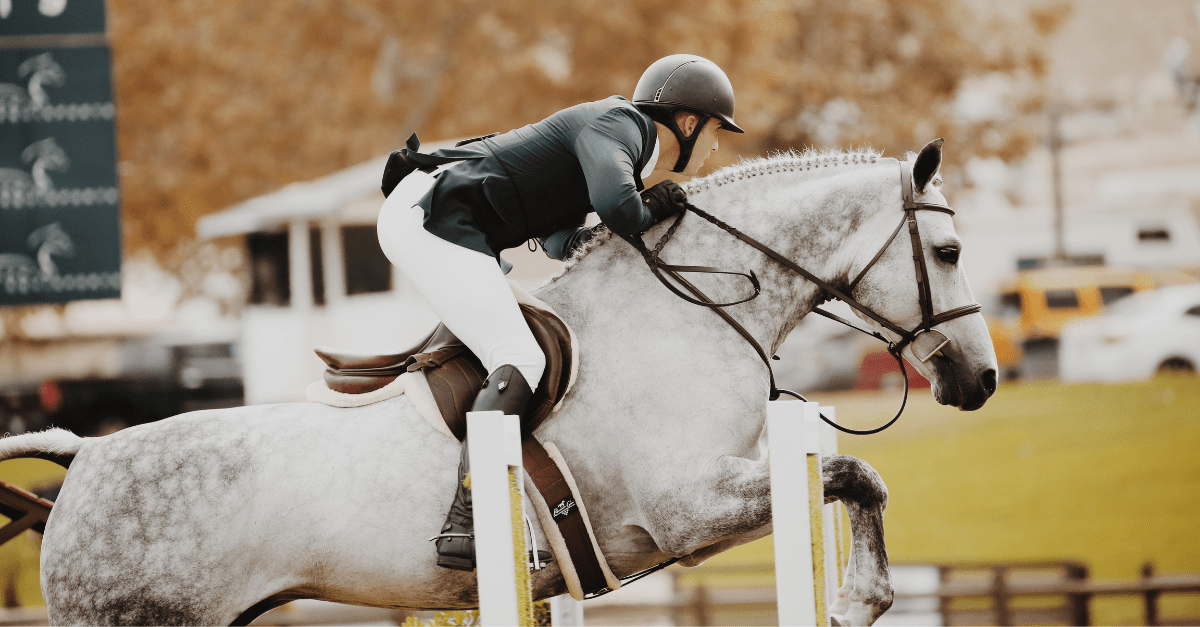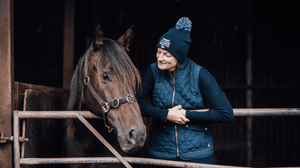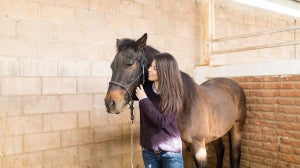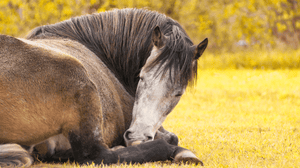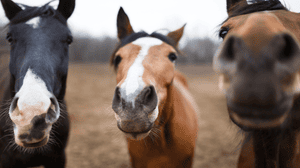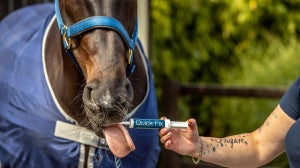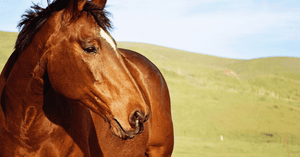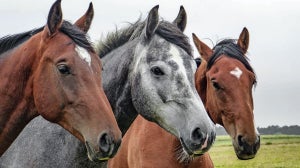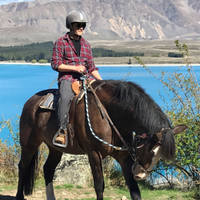
Gastric ulcers in horses can occur in any breed and at any age, including young foals. Equine ulcers are typically categorised by their location in the stomach, as horses have two lining tissues.
They’re a fairly common issue and can range in severity from moderate inflammation to erosion and bleeding, which means management, diagnosis and treatment are crucial.
In this article, we’ll explore what equine ulcers are, what causes them, and the risk factors involved. Keep reading to find out how to tell if your horse has ulcers and discover how you can treat, manage and prevent the issue.
What Are Gastric Ulcers?
Ulcers can occur anywhere along the gastrointestinal tract, including the mouth, but gastric ulcers specifically refer to ones found in the stomach. They affect the mucosa, which are the mucous membranes.
There can be one or more, and they can vary in size and severity. A mild lesion is usually superficial with some redness and is small. A severe case may mean larger ulcers, numerous instances and deeper lesions.
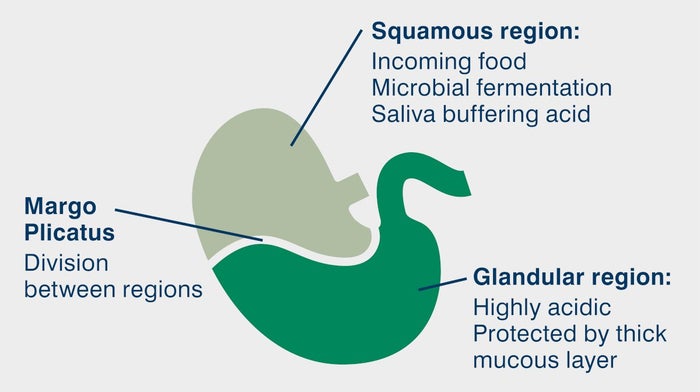
A horse’s stomach includes the squamous lining (the upper part) and the glandular lining (the lower part). Ulcers can occur in both the squamous and glandular regions, which produces stomach acid.
The term Equine Gastric Ulcer Syndrome (EGUS) refers to both types of ulcers. However, research has identified two different disease processes that sit under that umbrella term: Equine Glandular Gastric Disease (EGGD) or Equine Squamous Gastric Disease (ESGD) based on the location of the ulcer.
Top tip: The squamous region of the stomach is not well-protected against acid, which means it’s sensitive to excess stomach acid and can become inflamed and painful. The glandular region has a thicker protective coating, making it more resilient. However, ulceration can still occur there, and it could be linked to reduced blood flow or impaired mucous production, although the exact cause is not yet completely known.
What Causes Gastric Ulcers?
Gastric ulcers can have one or more causes, including increased stomach acid and decreased mucous production.
Changes in the amount of acid and issues with mucous production are the direct causes, but there’s often something behind those problems that needs to be addressed. When focusing on ulcer prevention for horses, understanding and avoiding the risk factors are instrumental.
Risk Factors
Research into prevalences shows that between 50% and 90% of horses with the issue are athletes, including endurance, racing and show horses. However, a literature review from 2023 shows that more research is required to understand the risk factors of ESGD and EGGD, in particular, as it's the least understood of the two.
Current understanding shows that the pathophysiology and risk factors of ESGD and EGGD differ, although there is some crossover. Let’s take a look at the risk factors for each disease.
Exercise - Intense effort or exercise that has a long duration leads to increased abdominal pressure and stomach contraction. Both lead to an increase in the exposure of the squamous mucosa to acid.
Feeding starch - A 2019 study shows that a diet high in starch and sugar intake is commonly associated with ESGD. Over 2g per kg of body weight per meal was considered high. The reason behind this is that the byproducts of bacterial fermentation from those carbohydrates cause and worsen existing damage.
Nutrition - A lack of fibre is another risk factor. Fibre-rich diets increase chewing, which produces saliva that has a buffering effect when it comes to stomach acid. It also works in the stomach to limit acid splashing.
Disease - EGGD and pyloric stenosis can lead to delayed gastric outflow, which is a cause of secondary ESGD.
Feeding pattern - A horse’s stomach constantly produces gastric acid, which means when a horse is without food, it isn’t producing saliva, and the stomach is growing more acidic. While the glandular lining can tolerate higher acidity, long hours without forage is a risk factor, especially when combined with other factors on this list.
Stress - Increased work, particularly for endurance horses, and environmental stressors are thought to disrupt the normal blood flow to the stomach and affect mucous production.
Gastritis - A 2021 study shows that horses with EGGD have a different microbiome to those that don’t have the disease, showing that a form of unclassified gastritis linked to microbiota plays a role in EGGD.
Signs of Gastric Ulceration and Diagnosis
While knowing the signs of ulcers in horses is advantageous, it’s also important to note that they can vary and be vague and hard to spot. In some cases, horses can show no signs at all. You might notice one or more of the following in horses with ESGD and EGGD:
Changes in appetite
Weight loss
Colic
Changes in behaviour, including grumpiness and crib biting
Poor performance
Diarrhoea
Poor coat quality (uncommon)
Whether a horse shows signs or not, a diagnosis of ESGD or EGGD relies on gastroscopy, which has proven to be the most consistent method for determining which condition the horse has and grading ulcers. This involves passing a camera into the horses stomach to see the lining, and will be performed by your veterinary surgeon.
Treating Gastric Ulcers
Following a diagnosis, the main ulcer treatment for horses is through the pharmaceutical route. However, there are also some best practices for management that you can adopt to help that treatment and prevent ulceration from worsening.
Most treatments focus on acid suppression, barriers to acid diffusions, protection of the glandular mucosa and enhancing mucosal blood flow. The location of the ulcers is a deciding factor in the treatment route. Medication and management are required for successful treatment.
Medication
The different types of ulceration may respond differently to medications, and so your horse's treatment plan will be decided by your treating vet.
A range of medications may be used, the most common ones being omeprazole (which may come in oral or injectable form) and sucralfate. The duration of treatment and dosages will vary, depending on many factors with your horse's case. Your vet will take all of these things into consideration.
Management
Any ulcer care for horses should involve removing the risk factors for EGUS. Measuring your horse’s roughage intake and taking steps to increase it to at least 2% of body weight per day is an important step. Reducing starch intake to recommended levels will also play a role.
Ensuring adequate rest days and reducing environmental stressors are key factors for preventing and treating EGGD. Limiting the duration of exercise is essential for ESGD treatment and prevention.
Exercise timing can help horses with or recovering from EGUS. Allow for adequate grazing hours in the morning and aim to exercise in the afternoon when the roughage consumed can act as a buffer to the stomach acid.

